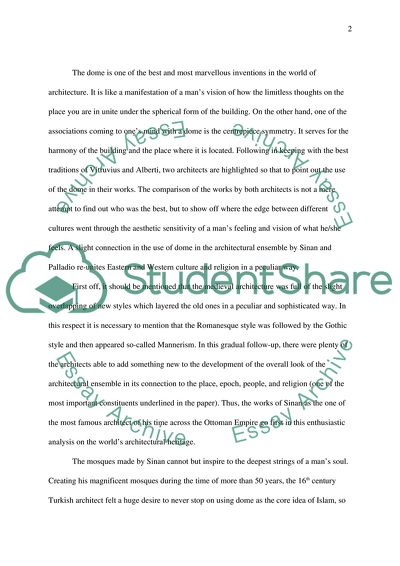Cite this document
(Comparing Domes of Architect Sinan to Renaissance Architect Palladio Essay Example | Topics and Well Written Essays - 2000 words, n.d.)
Comparing Domes of Architect Sinan to Renaissance Architect Palladio Essay Example | Topics and Well Written Essays - 2000 words. https://studentshare.org/architecture/1764645-comparing-domes-of-architect-sinan-to-renaissance-architect-palladio-palladianism
Comparing Domes of Architect Sinan to Renaissance Architect Palladio Essay Example | Topics and Well Written Essays - 2000 words. https://studentshare.org/architecture/1764645-comparing-domes-of-architect-sinan-to-renaissance-architect-palladio-palladianism
(Comparing Domes of Architect Sinan to Renaissance Architect Palladio Essay Example | Topics and Well Written Essays - 2000 Words)
Comparing Domes of Architect Sinan to Renaissance Architect Palladio Essay Example | Topics and Well Written Essays - 2000 Words. https://studentshare.org/architecture/1764645-comparing-domes-of-architect-sinan-to-renaissance-architect-palladio-palladianism.
Comparing Domes of Architect Sinan to Renaissance Architect Palladio Essay Example | Topics and Well Written Essays - 2000 Words. https://studentshare.org/architecture/1764645-comparing-domes-of-architect-sinan-to-renaissance-architect-palladio-palladianism.
“Comparing Domes of Architect Sinan to Renaissance Architect Palladio Essay Example | Topics and Well Written Essays - 2000 Words”. https://studentshare.org/architecture/1764645-comparing-domes-of-architect-sinan-to-renaissance-architect-palladio-palladianism.


